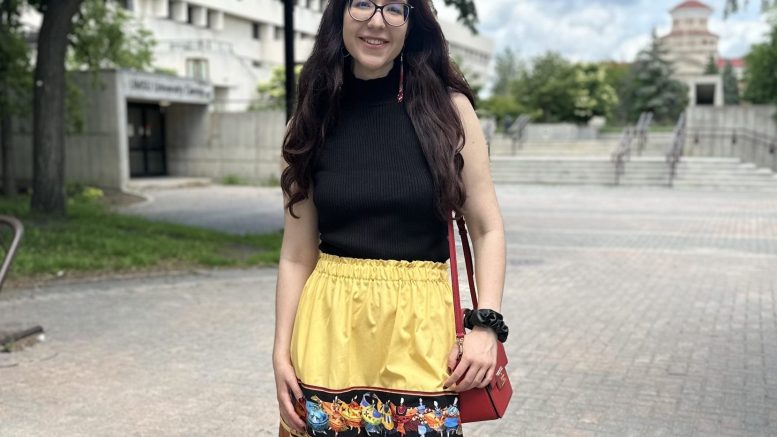For UMSU Indigenous students’ representative Michaela de Hoop, connecting Indigenous students with resources and communities on campus is vitally important.
“A lot of Indigenous students like myself come from northern rural communities, so imposter syndrome is a really big one,” de Hoop said.
The U of M states there are around 2,600 Indigenous students at the university and aims to recruit more Indigenous students in the future.
As part of her role as Indigenous students’ representative, de Hoop will put on workshops throughout the year for people to learn more about Indigenous history and cultures. This year, she plans to host bead making and leather working workshops along with land-based education. She is also trying to connect with students interested in bringing back the Métis university students’ association.
In addition to workshops, de Hoop said “this year, one of our big plans is a mural, hopefully, in the UMISA [University of Manitoba Indigenous students’ association] lounge.”
Fall is a crucial time for de Hoop to connect with students, between Orange Shirt Day and outreach to students in September, and Indigenous Students’ Month in November. This month includes weekly activities organized by the Indigenous students’ representative and is capped off by the Indigenous Leaders Gala.
Between serving these communities and educating non-Indigenous students, de Hoop explained that her resources are limited. “Funding too is another big issue. We need to get outlets in this room [UMISA lounge]. Our community initiative funding is like $15,000 to $16,000, but getting new outlets in this room alone is $4,000.”
The Indigenous students’ representative’s community initiative funding is determined by UMSU.
Once a month during the school year, the Indigenous students’ representative holds a community assembly. Indigenous and non-Indigenous students can come to learn and talk about what events they would like to see. De Hoop explained that “community initiative funding has to be voted on by the community, so this is where we’ll approve funding for the month.”
De Hoop also spoke about the U of M’s draft of the Truth and Reconciliation Framework: Time for Action — 2024-2029, which was launched on June 10. The purpose of the framework is to serve as a guiding document in collaboration with Indigenous staff, faculty and students to help academic and administrative units develop their own plans for advancing reconciliation.
The advisory committee for the draft framework was chaired by Angie Bruce, vice-president of the university, who is herself Indigenous, and included de Hoop and past Indigenous students’ representative Ishkode Catcheway.
De Hoop said “right now, each faculty is kind of doing their own thing when it comes to reconciliation […] this is meant to be an overall […] framework for the university to follow.”
She expressed confidence in the process of creating the framework, saying that “it was done in the correct manner.”
The framework lays out a timeline from the present going back to 1877 which de Hoop described as the “history of Indigenous students and a university that wasn’t meant for us.” The framework is currently going to the senate and there is an online survey for students to submit feedback.
This framework survey is open until July 12. For de Hoop, this framework will serve as a measure to track how much progress on reconciliation is being made over time.
“I’m curious to see when we go back in 2029 and reflect on this document, how much progress has ensued since 1877,” she said.
Students interested in submitting feedback on the draft Truth and Reconciliation Framework can do so before July 12 at umanitoba.ca/about-um/truth-and-reconciliation-framework-feed-back-form.


